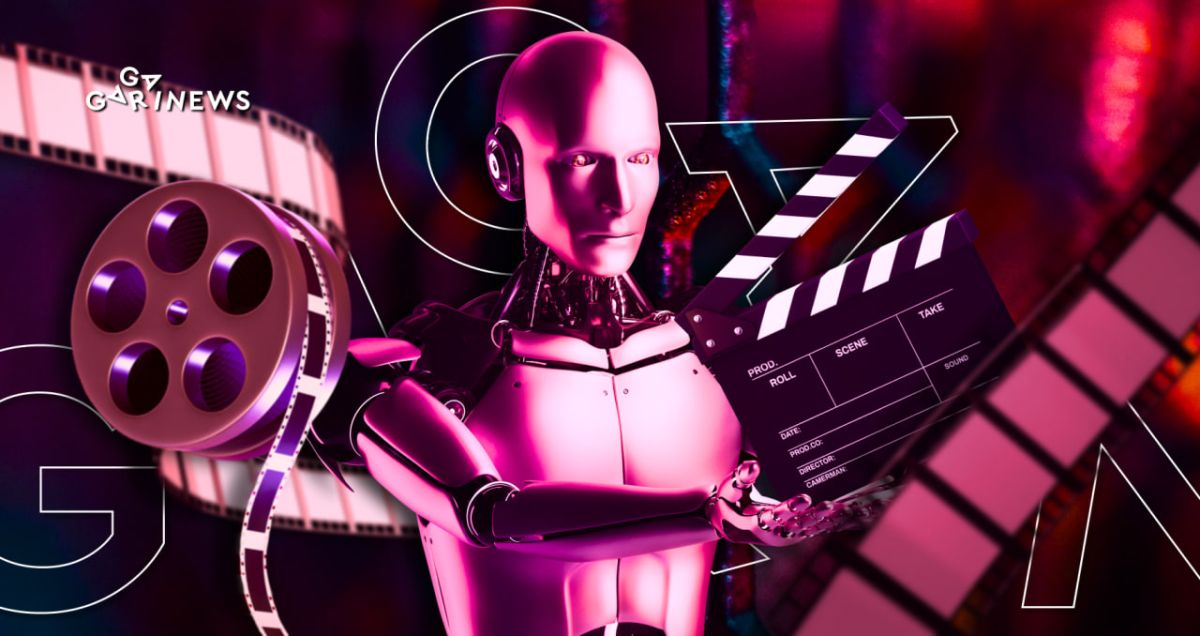Artificial Intelligence in the Film Industry: Advances and Debate

While AI offers groundbreaking potential for filmmaking, it concurrently sparks a myriad of ethical and societal debates.
On this page
Hollywood and other major film studios are embracing AI to tackle challenges such as spiraling costs and heightened competition. Disney, for instance, has launched an AI task force, while Netflix is offering a position centered on AI expertise with a tempting annual salary of $650,000. This is occurring despite a SAG-AFTRA strike calling for regulations on AI's influence within pivotal areas of cinema.
Scriptwriting and AI
The early intersection of artificial intelligence and cinema birthed the 2016 short film, “Sunspring”. Guided by British director Oscar Sharp and technologist Ross Goodwin, a neural network named Benjamin was trained using a myriad of scripts. Following this, the AI penned its own story, initiated by specific cues such as a title, the fabric of the world, and a starting scene. The film, set in a backdrop where individuals resort to selling their blood due to rampant unemployment, left audiences divided, securing a middling five out of ten on IMDB.
But as technology progresses, so do its use cases. The contemporary GPT-4 language model is now capable of conjuring full-fledged narratives in mere hours. After some professional finetuning, these stories can potentially stand shoulder to shoulder with those of budding screenwriters. Film companies 28 Squared Studios and Moon Ventures harnessed this prowess using the ChatGPT application to produce “The Safe Zone”, a short about an AI insurrection. The entire project, from inception to completion, spanned just a week, leveraging the AI’s generated plot, scene breakdowns, and ancillary details that emerged from the team's queries.
The chatbot produced a 5-minute script, a shot list with detailed instructions on how to shoot the film. Can you believe the AI was able to give us specific camera movements, lighting requirements and even wardrobe requirements!
© Richard Juan, co-producer and CEO of 28 Squared Studios.
Upon release, the film amassed over 100,000 views on YouTube, but only a fraction of those translated to likes. The feedback was polarized: while some lauded the initiative, others were more critical. A segment of viewers contended that the creators might have meddled with the narrative, incorporating elements beyond the AI's grasp. They sought transparency from the company, requesting a glimpse into the chat history with the bot to gauge the degree of human input. Yet, their pleas went unanswered.
Can this be an amazing accomplishment while also being laughably bad?
one viewer pondered.
On another note, TV personality Ben Mankiewicz, an heir to the legacy of illustrious screenwriter Herman Mankiewicz, found merit in ChatGPT's offerings. Employing AI, he crafted an introduction for the classic, “Citizen Kane”. Though commendable, the result lacked acknowledgment of his forefather's role in the creation of the masterpiece. Consequently, Mankiewicz championed the sentiment of the screenwriters' guild: AI, potent as it may be, should primarily serve as a supplementary tool in the intricate realm of filmmaking.
Visual Effects
Visual effects are a crucial domain in filmmaking where the potential of artificial intelligence is becoming increasingly apparent. Platforms like MidJourney, Stable Diffusion, and Runway have demonstrated impressive capabilities in producing images and animations. As a result, film studios are integrating such automated processes for design and unique visual styles to decrease expenses and reduce human intervention.
Identifying whether visual effects or images were generated with AI can be challenging. Pixar shared an anecdote from the making of their animated movie “Elemental.” The creative team faced challenges in developing a stylistic animation for the protagonist, Ember, who was meant to be entirely composed of flames. This would typically require artists to manually craft and animate every frame.
Based on advice from the project's Technical Director, Paul Kanyuk, they sought expertise from Disney Research Studios, renowned for their work in AI and machine learning. In a collaborative effort, they surmounted this artistic challenge: An illustrator, Jonathan Hoffman, sketched various cartoonish flame designs. Then, with a specialized AI model, these illustrations were merged with a realistic flame simulation, resulting in natural movements within the intended style.
Once you apply a style transfer to naturalistic fire, you can actually start to direct its style and start to bring the artist’s hand into something that is otherwise not touchable,
© Jeremie Talbot, co-character supervisor.
The main hurdle encountered was a significant shortfall in computational resources during the processing phase. Despite this challenge, the company managed to execute their vision by leveraging every available Pixar processor. This method proved to be both quicker and more cost-efficient than manually crafting the animation. Thus, artificial intelligence demonstrated its value as a technical aide, and the film resonated with audiences, garnering many favorable reviews.
Characters Ember and Wade. Source: the animated movie “Elemental.”
Yet, these successful endeavors haven't universally swayed artists. Jennifer McCarron, CEO of Thunderbird Entertainment Group, posits that while AI can manage repetitive and labor-intensive tasks, it misses the nuances of the human touch. Consequently, it can't genuinely supplant traditional artistic endeavors, especially considering that these language models train solely on pre-existing images.
Creativity is the heart and soul that can't be replaced,
© Jennifer McCarron, the CEO of Thunderbird Entertainment Group.
Advocates for stringent AI regulations extend to visual effects professionals. Believing that mere public declarations aren't sufficient, they've founded a guild. This body seeks to counteract businesses' inclination to use artificial intelligence without proper checks and balances.
The Craft of Acting
Actors are increasingly engaging with artificial intelligence, much like many other fields. They are tapping into motion capture, de-aging techniques, and ever-evolving deepfakes. This is especially relevant for science fiction movies where a majority of the characters are crafted using computer graphics. For instance, to capture Josh Brolin's facial nuances for his role as Thanos in “Avengers: Infinity War,” film studios utilized AI. Darren Hendler, who heads the digital human group at Digital Domain, is confident that the near future will allow for the creation of such fantastical characters in real time, reducing the constant need for high-cost actors.
De-aging Harrison Ford. Source: The movie “Indiana Jones and the Dial of Fate.”
Recent advancements in de-aging technology have been showcased in movies like “Indiana Jones and the Dial of Fate,” featuring a younger-looking Harrison Ford, and the series “The Mandalorian,” where a more youthful Mark Hamill was recreated for the role of a younger Luke Skywalker. While some viewers have been captivated by these innovative endeavors, others have critiqued the quality of the motions rendered and debated the ethics behind such technologies. The sentiment is divided among the acting community too: while Harrison Ford has praised the technology, Keanu Reeves, ever ageless, has voiced concerns over the unbridled advancements in artificial intelligence.
The people who are paying you for your art would rather not pay you. They’re actively seeking a way around you, because artists are tricky. Humans are messy,
© Keanu Reeves, actor.
Nevertheless, such technologies do have their evident merits. For example, they can protect identities in documentary filmmaking or pay homage to a departed individual with a poignant scene. Yet, in light of these possibilities, the actors' guild, for the first time in four decades, has taken a firm stance by joining a strike, abstaining from auditions, film shoots, and promotional campaigns.
Limitations of Artificial Intelligence
Aside from the societal challenges AI might introduce, such as rising unemployment and dwindling opportunities for emerging professionals, there are other inherent limitations. These emphasize the irreplaceable nature of human involvement in the creative journey:
1. Absence of Emotional Depth: At its core, art captures the inner feelings, ethical reflections, cultural nuances, and other subtleties of the creator. While automation might streamline the process of film-making and reduce costs, it risks diluting the emotional richness of the outcome.
2. Reliance on Algorithms: AI tends to generate content based predominantly on audience preferences, its training set, and the biases introduced by developers. This could lead to an influx of “safe” or formulaic movies. Some critics argue this phenomenon is already noticeable in the movie industry, with or without AI's influence.
Where is the AI getting its information to be programmed and is that information only coming from a certain subset of society? If it’s going to tell stories from the perspective of its programmers, essentially, then you have to worry about the lack of diversity among the programmers,
notes Marc Guggenheim, author of the LegalDispatch newsletter.
3. Copyright Concerns: Safeguarding intellectual property is deeply ingrained in Western culture. Present-day language models often train on a mix of public data, which might encompass copyrighted or even pirated materials. Consequently, certain legal institutions are already scrutinizing the legality of such practices. If the film industry leans heavily on AI for mass commercial content creation, the ensuing legal ramifications could be vast and unpredictable. A majority of writers, artists, and other creative personalities will likely push for a ban on such methodologies or demand remuneration whenever their prior creations are repurposed.
Companies' Stance
Film studios have turned down the guild's call for stringent oversight of artificial intelligence, suggesting instead that they convene yearly to address accumulating concerns. In the end, these discussions bore no fruit, and production halts resulted in substantial financial setbacks: certain projects are hemorrhaging up to $600,000 weekly and have been compelled to postpone their debuts by a few months. Despite this, the producers remain unyielding.
The endgame is to allow things to drag on until union members start losing their apartments and losing their houses,
a studio executive told Deadline Hollywood.
Perhaps this self-centered approach may prove successful against screenwriters, visual effects specialists, and other industry participants whose earnings depend on regular work. However, one would hope that a compromise can be reached and the production of captivating films with real actors will continue.
The content on The Coinomist is for informational purposes only and should not be interpreted as financial advice. While we strive to provide accurate and up-to-date information, we do not guarantee the accuracy, completeness, or reliability of any content. Neither we accept liability for any errors or omissions in the information provided or for any financial losses incurred as a result of relying on this information. Actions based on this content are at your own risk. Always do your own research and consult a professional. See our Terms, Privacy Policy, and Disclaimers for more details.



























